Antonio Shepherd made two notable adult films in 1978: 7 Into Snowy and Chorus Call.
They featured many of the biggest stars of the era, such as Abigail Clayton, Kay Parker, Darby Lloyd Rains, and Paul Thomas.
And then Antonio Shepherd promptly disappeared from the adult film scene as soon as the movies were released.
So who was he, where did he come from, and where did he go?
The Rialto Report went looking for the elusive man, and found the story of an immigrant family amidst the heyday of 1930s swing music – with Artie Shaw and Billie Holiday; Tony Curtis, Cary Grant, and a 1959 high-grossing Academy Award-nominated film – and a promising actor who had Hollywood at his feet; a teen idol of the rock n’ roll era, an aspiring playwright, and a garage punk band singer who made one of the great unknown underground singles of the 1960s; a documentarian, a corporate Madison Avenue ad man, and a jingles writer; a developer of children’s TV cartoon shows, one of the great voice directors in animated films, Stan Lee’s right hand man, and the creation of the Marvel universe.
Oh, and we found out about the making of two adult films as well.
The story of Antonio Shepherd can finally be told.
With thanks to the family, friends, and colleagues of those mentioned in this story who were generous in sharing their memories.
—————————————————————————————————–
1.
Introduction
Over the years of interviewing people connected with the early adult film industry, whenever I met someone who’d appeared in 7 Into Snowy (1978) or Chorus Call (1978), I always held back the question I most wanted to know until the end. Then I would ask it casually to mask my obsession.
“And what do you remember about Antonio Shepherd, the director of these two films?”
Both of these movies were high-profile, high budget, and high concept productions. They came from David F. Friedman’s Entertainment Ventures, Inc. (EVI) company, co-produced with Friedman’s sometime-partner William Allen Castleman. They featured many of the most well-known and best-loved actors from both sides of the country. They won awards and still sell well today. But the identity of the man who actually made them has remained shrouded in mystery.
“Was he the big fat guy who shouted at us all through the production?” asked Paul Thomas, male lead of ‘7 Into Snowy’, before answering his own question: “No, I think I’m getting him mixed up with someone else. I’m drawing a blank.”
“I have nothing whatsoever in my memory about him” said Abigail Clayton, Paul Thomas’ co-star. “But you have to understand, that was a period when I could be… a little out of it. There were some drugs involved, after all…”
“People always ask me that!” exclaimed Kay Parker, who starred in both films. “But I’ve got nothing. He was pleasant, directed the films competently, and then… from what I heard, he didn’t even turn up to collect the awards that they won.”
It was true. Antonio Shepherd made just two movies, and then disappeared.
*
2.
1936 Antonio Pestritto
‘Antonio Pestritto.’
He knew it was a wop name. A name for a Guinea, a Dago, an impoverished Guido immigrant from southern Europe – “Gentlemen, there’s a Goombah in our midst, mind your wallets and protect your women” – but the man behind the Italianate name was used to cheap racial slurs.
No matter that Antonio had an irresistible charm, an irrepressible friendliness, and an irrefutably big heart. And no matter that he had a big band that drew the biggest crowds for the best swing music north of 1930s New York City.
But Antonio was smart too, and he understood the truth: names are important, especially for an entertainer on the road. Names set expectations, expectations cause excitement, and excitement sells tickets. Choose the right name, splash it across advance publicity, and your show can sell out before you even hit town.
Antonio knew all that.
He’d been born in Middletown, Connecticut, in 1907, a first generation American – but it had been close: his parents had arrived from Sicily just a few seasons earlier, and his father, lacking in language and business skills, had struggled to make a living as a cabinet maker. But assimilation is the name of the game for any successful immigrant, and it’s always hard-earned. And sometimes it starts with something as simple as your name.
It all came to a head one stormy night in 1936, when Antonio’s band was playing a radio broadcast in New Orleans. The announcer stood up to introduce him: ‘Antonio Pestilencio… Anthony Pessardo… Anti Pattilendo..” he stammered.
Antonio sighed. His re-invention was overdue. He needed a different name to conceal his background and to sell his product.
He whispered to the announcer that he was now called ‘Tony Pastor.’ He’d been thinking about the name for years and liked its simplicity. It was as approachable and unthreatening as it was fun and unremarkable. It sounded like ‘pasta’, his staple diet which gave him his rotund form. And he liked that ‘Pastor’ was the Italian translation of ‘shepherd.’ You see, big-hearted, paternal Antonio saw himself as the shepherd for everyone in his life: his family, band members, music, and audience.
So, overnight, Antonio became Tony Pastor.
*
3.
1977 Antonio Shepherd
Forty-one years later, Tony Pastor’s son faced a similar decision, though for entirely different reasons.
It was 1977, and Tony Pastor Jr. needed a different name, just like his father had years before, to conceal his background and to sell his product. Just like his father, he knew that the name would soon be plastered across posters adorning the outside of theaters. And just like his father, he knew he had to get it right or else it would draw attention of the wrong type.
But there was a crucial difference between father and son choosing a new name: whereas Tony Sr. had wanted a name to draw attention to himself, Tony Jr. wanted the opposite. He needed an anonymous name, so picayune that no one would bother tracing it back to him.
In truth, it didn’t take him long: he decided to pay oblique tribute to his beloved father and call himself “Antonio Shepherd.”
It would be name that would conceal his true identity for almost 50 years.
*
4.
1922-1938 Tony Pastor Sr.
If the definition of a jazz musician is a guy who puts a $5,000 horn into a $500 car and drives 50 miles to make 5 bucks, well… Tony Pastor Sr., did pretty well, thank you very much.
A charismatic singer and saxophonist, Tony Sr. began performing in the early 1920s, quickly building a name for himself with stints in Connecticut jazz bands, several of them featuring his friend, a talented younger kid, Artie Shaw. Tony Sr.’s talent was immediately obvious, but what elevated him was his beaming, ebullient character: Tony Sr. was no suave, too-cool-for-school, Sinatra-style, magnetic matinee crooner, but who cared? His M.O. was about everyone having fun: “Mr. Pastor is a short, stocky man whose dark hair curved into a deep widow’s peak, framing a face that seems impossibly jovial,” an early reporter observed.
Tony Sr.’s big break came in 1936 when he joined up with his old friend Artie Shaw who had formed one of the country’s most popular big bands. It was the heyday of the swing era, and Artie was regarded as one of jazz’s finest clarinetists – as well as one of the century’s elite shaggers, counting actresses Lana Turner and Ava Gardner among his eight wives, and Betty Grable, Judy Garland, and Lena Horne among his too-many-to-keep-count-of coital conquests.
With Tony Sr. onboard, Artie Shaw’s band enjoyed a stream of million-sellers, most famously the number one hit single, ‘Begin the Beguine’ (1938).
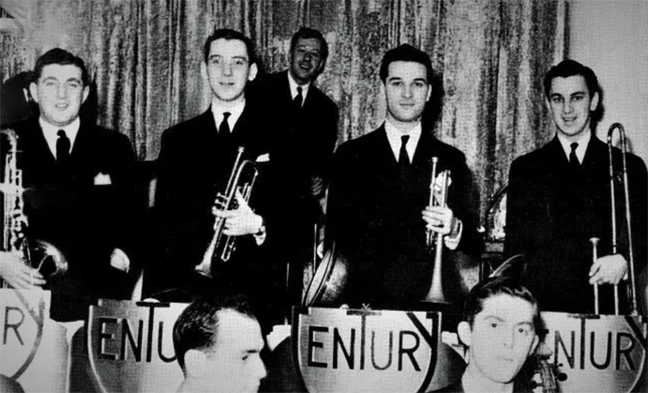 Tony Pastor Sr. (far left) with the Artie Shaw band
Tony Pastor Sr. (far left) with the Artie Shaw band
Tony Pastor Sr. takes a solo at the 1.32 mark
Remote concert broadcasts – often transmitted from the Blue Room of the Hotel Lincoln in New York City – spread the band’s music across the country like a be-bop forest fire. Overnight, Tony Sr. was surrounded by jazz royalty, becoming particularly tight with Billie Holiday, who signed on as the band’s vocalist in 1938. The band were making history: the first white group to have a full-time black female singer – and tour the country, including the segregated South. Tony Sr. became Holiday’s closest confidant and chief protector. As Holiday’s biographer wrote: “Tony Sr. was a big factor in her life. She and Tony were very close friends. She depended on him being there for her when she was with the Shaw band. This was a time when you couldn’t even get something to eat at a greasy spoon because you were black, so Tony had many fights protecting her.”
As Holiday herself wrote, “If you’ve got one of those Italian boys like Tony Pastor in your corner, they’ll go to hell for you and die for you.”
*
5.
June 7, 1977 Antonio Shepherd
Before you direct your first explicit sex feature film, the overwhelming probability is that you’ve stood on an adult film set before. Probably too many times to count.
You’ve experienced the chicanery just to set up the day’s secretive shoot, the noisy cameras capturing concupiscent genitalia, the heat of industrial lights burning naked forms, and the pungent odor simmering from writhing bodies. You’ve groaned at the time-consuming performance issues of a cocksure stud whose ego suddenly shatters because of a gaffer’s smirk, or the prissy restrictions unexpectedly introduced by the prima-donna, pre-Madonna, semi-big-name female star when she glides into early-morning make-up. And you’ve had to ignore the constant, nagging fear that the short-end film stock might just jam in the cartridge seconds before capturing the crucial money shot.
But just as nobody cares about your problems in life, even fewer care about your problems on a porn shoot. Being a sex film director is like being a football coach, conceptual artist, sex therapist, and traffic cop – all at the same time. You’re like the bastard love child of Vince Lombardi, Jackson Pollock, Dr Ruth, and those two cops from CHiPS. In short, if you weren’t already intimately familiar with this unique set of challenges, no one would have trusted you with this wretched job in the first place.
Tony Pastor Jr. could see that.
He was no novice when it came to being surrounded by a film crew and having people await his instructions. He knew an f-stop from an ISO, and the shot density from the depth of field. But as he watched the crew set up for the first day’s shoot, he realized that nothing had prepared him for what he was about to see unfold in front of him.
“Antonio Shepherd?”
For a moment, Tony forgot his nom-de-porn, before turning around to find himself addressed by a preening, cartoonishly-aristocratic figure holding the hand of glassy-eyed waif.
Lord Flaunt-a-lot introduced himself as “Paul Thomas, the film’s star,” and his companion as “Abigail Clayton, my Shiksa Goddess.” He informed Tony they needed to discuss their sex scenes.
“I should to be filmed from the right,” he instructed. “My cock looks infinitely better from that side.”
*
6.
1938-1959 Tony Pastor Sr. and Artie Shaw
The concert touring schedule made for a grueling, exhausting life, but Tony Sr. got on great with Artie, even if their artistic temperaments were at opposite ends of the jazz spectrum: Tony Sr. was unapologetic about his influences – Louis Armstrong and Louis Prima, dancing and love songs – whereas Artie prized experimental, innovative music that blended the classical with jazz traditions. Eventually Artie grew disillusioned with playing the same pop tunes over and over (“’Begin the Beguine’ is a pretty nice tune… but not when you have to play it 500 nights in a row,” he complained) and one night in 1939, in the middle of an on-air broadcast concert from the Hotel Pennsylvania in New York, Artie walked offstage in frustration or boredom, quit his own band, and turned up in Mexico a few days later to start a new life.
For Tony Pastor Sr., it was the big chance that he wasn’t looking for. He moved center-stage and started his own orchestra, largely made up of ex-Artie Shaw band musicians. It was the perfect time to launch a feel-good band: the world was on the brink of war and the country needed a reason to smile and an excuse to dance. Tony’s offering was simple, feel-good music, an emphasis on novelties, eschewing the newer jazz forms that had become as technically demanding as trying to undo a four-hook bra strap while driving a stick-shift.
Tony Sr.’s new band started with a seven-month engagement at the Hotel Lincoln in New York City and included five live broadcasts per week on NBC. It was an instant success, and Tony became one of the last of the great band leaders. He added sex appeal to the band too, hiring the teenage Clooney sisters, Rosemary and Betty (future aunts of George), as singers. To say his new band was in demand was like saying Dizzy Gillespie had round cheeks: they appeared on television shows, toured constantly (it was estimated that between 1940 and 1950 Pastor’s band traveled a million miles around the U.S.), and made hit records for all the major labels – including Bluebird, Victor, Columbia, Decca, Roulette, Everest, and Capitol.
 Tony Pastor Sr. signing autographs for fans
Tony Pastor Sr. signing autographs for fans
At the center of this swing band maelstrom was Tony Sr. himself, with his high-pitched, exuberant, and expressive singing and impish personality, always putting on a breathless performance, and well-loved by his musicians and fans. He appeared in musical movie shorts, had his own radio show, appeared in the 1947 feature hit ‘Two Blondes and a Redhead’, and was regularly on TV variety programs like Kraft Music Hall, The Ed Sullivan Show, The Tonight Show, and Cavalcade of Bands.
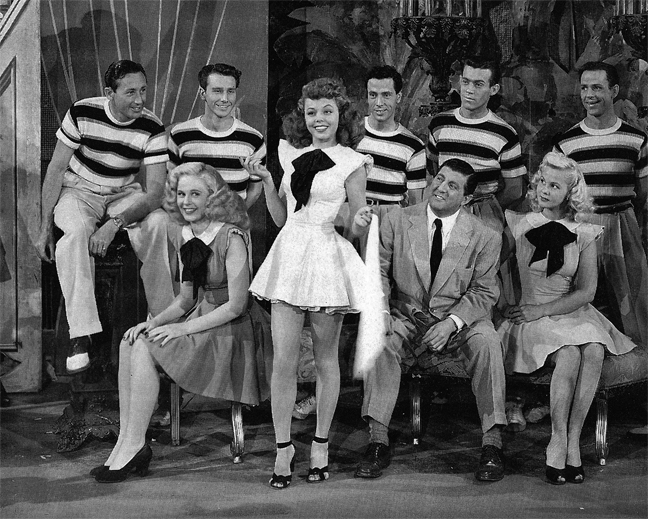 Tony Pastor Sr. (front, center, right) in Two Blondes and a Redhead’ (1947)
Tony Pastor Sr. (front, center, right) in Two Blondes and a Redhead’ (1947)
His band’s success lasted for two decades, outliving all the other big swing orchestras, but by 1959, swing music’s shelf life had finally expired. It had been overtaken by rock n’ roll – nostalgia wasn’t what it used to be – so Tony broke up the band.
He wasn’t finished though. In his eyes, he now wanted to focus on the most important project of his life: his family.
*
7.
1965-1970 David F. Friedman and William Castleman
Dave Friedman and William Castleman went back to the mid-1960s. Back to when Friedman sometimes preferred to be known as ‘Seymour Zolotareff’ or ‘David Mason’, and Castleman was just plain ‘Billy Allen.’
They had plenty of common ground: born within a year of each other in the early 1920s, both grew up thrilled by traveling carnival troupes, both loved film, and both served their country in the army in the Second World War. After the conflict ended, their lives took different courses – Friedman became a marketing man for Paramount followed by independent film distribution, Castleman eexperienced years as a struggling musician before training to become a projectionist and picking up work composing low budget film soundtracks to make ends meet – but when they met, they quickly became close friends.
It didn’t take long before they figured they should work together on a movie, with Friedman producing/directing and Castleman writing the score. Their first, The Defilers (1965), a black and white sexual melodrama – shot guerilla-style in West Hollywood in five days using their own props, cars, and homes – featured an impressive noir-ish soundtrack by Castleman. They considered their probationary effort to be a success, and so used it as a template for increasingly garish collaborations, such as She Freak (1967), The Acid Eaters (1968), and The Lustful Turk (1968). Each time, Castleman provided the score using the name ‘Billy Allen’ and performed uncredited jack-of-all-trade crew roles.
Their films were all produced by a new company formed by Friedman: Entertainment Ventures, Inc. (EVI). Adult films were getting more attention, and his vision for EVI was to provide higher-budget, more polished films than the charming but often-inept low-budget Nudies that had flooded the market. Castleman had tired of just providing soundtracks and wanted to produce his own films, and so became a production partner with the new company.
Their partnership was successful, and Friedman and Castleman became a sex film force, their names often appearing above the movie titles, co-producing hit movies such Thar She Blows! (1968), Starlet! (1969), and The Ecstasies of Women (1969).
*
8.
1930-1958 Tony Pastor Sr. – and Guy, Tony Jr. and John
Tony Pastor Sr. was a simple man who had two loves: his family and show business.
In the late 1920s, he’d met and fallen in love with a local Italian girl, Dorothy Petrossi. They got engaged in 1930, married in 1932, started a brood in 1934 – three boys – and the names of each betrayed Tony’s swinging show business inclinations.
First there was Guy Louis Pastor, born in 1934, named after both Guy Lombardo, the bandleader known for his ‘sweet jazz’ style, and Louis Armstrong, the father of modern jazz. Guy was well-named: he inherited Tony Sr.’s swing music passion and talent, having a rich singing voice, and being an excellent pianist.
Then there was Anthony Louis Pastor Jr, – known as Tony Jr. – born in 1938, named after his father and the eccentric, popular singer/bandleader, Louis Prima. The youngest, John Pastor, the quieter, serious one, was born in 1945.
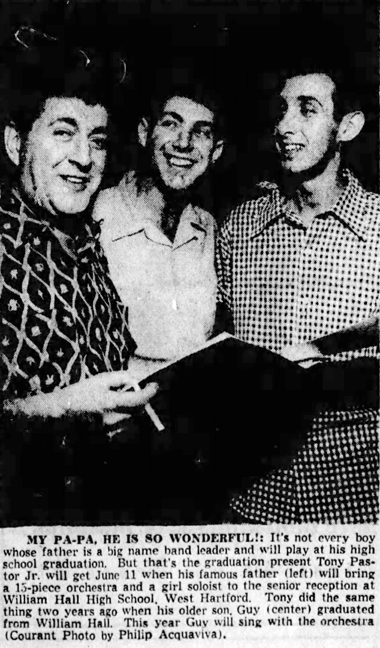 (from left to right) Tony Sr., Guy, Tony Jr.
(from left to right) Tony Sr., Guy, Tony Jr.
The boys were good kids – popular, successful in school, and full of creative talents. The family was tight-knit, despite the often-lengthy absences when Tony Sr. toured. And though Dorothy tried to keep home life as normal as possible, it was difficult when ‘normal’ meant Billie Holiday giving the boys heard-earned life advice, family-friend Tony Curtis turning up to be their babysitter, proud father Tony playing at his sons’ graduations, or the boys playing with fellow nepo babies like Frank Sinatra Jr. (Sinatra Jr.’s close friendship with the Pastor boys would be highlighted in newspapers in 1963, when, at 19, he was kidnapped and held for ransom. Tony Pastor Jr. emerged as a spokesperson, and media interviews expressed their anguish – and subsequent relief – when Sinatra Jr. was released two days later after Sinatra Sr. paid the $240,000 ransom demanded by the kidnappers.)
But for Tony Sr., the constant presence of show business in his kid’s lives was a double-edged sword: he had worked too hard all his career for his sons to follow in his footsteps. Road life was too hard, he said: “They say there’s no business like show business? Well, there’s no other business with more knocks, that’s for sure.”
All Tony Sr. wanted was for his boys to get college degrees and then find professional jobs.
*
9.
1970-1973 David F. Friedman and William Castleman
Friedman and Castleman were an entertaining couple: two larger-than-life, old-school, carny dealmakers. Their happiest times were propping up the bar at the end of a day’s shoot, cigars and brandies in hand, telling improbably tall tales.
But if Friedman and Castleman seemed unlikely pornographers, it was because they weren’t. Not really – and they never wanted to be either. Sex was simply the ingredient that sold their product: if the audiences had wanted to see artisanal tapestries, well… they might have filmed looms instead. To them, sex was an act that was inherently ridiculous – funny, bawdy, and its depiction had to be undercut with a wink, a nudge, and a knowing smile.
But then came hardcore, and sex became serious.
For Friedman and Castleman, it was a disastrous step. Friedman was afraid of the law, lamenting that the point of a sex film was to sell the sizzle, never the steak. These explicit new films violated that precept: they featured close-ups of genitalia so extreme they resembled the cold cuts at Katz’s Deli. At first, the two friends refused to play along, not allowing actual intercourse to be shown in their films. Instead, they doubled down on what they knew: Promise everything, but show nothing. Innuendo not fellatio. Lean into humor and costumes. Throw lots of buxom, wanton wenches into the mix. And so, they made films that were outdated before they even hit the big screens, movies like Trader Hornee (1970) and The Erotic Adventures of Zorro (1972) – the latter directed by Castleman himself, his first in the hot seat. It was as if the pair had no clue what would turn their male customers on. Or maybe they did – but they were just too embarrassed or afraid to act on it.
But if Friedman and Castleman were misguided, they weren’t blind: they were consummate hustlers who knew they had to adapt to survive. With hardcore porn dominating the marketplace, EVI reconsidered the type of films it made: in short, everything had to change so that everything could stay the same. At first, EVI moved into the general release film market: Castleman, suffering from a case of if-you-want-a-job-done-properly-you-do-it-yourself, directed Bummer (1973). It was about a small-time touring rock band and their groupies. It was a mess and a flop.
*
10.
1959 Tony Pastor Jr.
Out of the three sons, the middle one, Tony Jr. was the joker in the pack.
If Tony Jr. had a problem in life, it was that he was just too damn talented. He was a jack of all trades, could sing, act, write, draw and paint, and was always the one with the most ambitious ideas. He dreamed less of music and more of finding a way to bring all of his creative interests together. As a result, the course of his future life was marked by success in one field before he jumped ship and set his sights on a new, different horizon.
His first love was the theater, and in 1956, he earned a theatrical scholarship at Columbia University in New York. “An Ivy League school,” his proud father boasted to concert audiences. “We have the next Arthur Miller on our hands!”
It was almost true. Tony Jr. wrote plays like other teenagers chewed gum, and some of them had already been performed in theaters across the northeast. But his father’s initial pride was dashed after a year, when Tony Jr. dropped out of the prestigious school: “Going to college to be a playwright is like studying dance if you want to become an architect,” he joked.
Tony Jr. took off, moving to California where his father’s showbiz connections found him work as a stage actor (he starred in ‘Tea and Sympathy’ at Rancho Park in West Hollywood with the Cheviot Hills Players) and as a playwright (his play ‘Hold Your Breath’ played at the Lobrero Theater in Santa Barbara.)
The west coast gamble paid off in style when Tony Curtis came to see him on stage – and was impressed that the precocious kid he’d once babysat in the 1940s had matured into a dark, twenty-something with genuine stage presence. Curtis took him under his wing and found him a part in his upcoming movie, ‘Operation Petticoat.’
The film was a World War II comedy set on a U.S. Navy submarine during the Battle of the Philippines, directed by Blake Edwards, and starring Cary Grant and Tony Curtis. Shot in Key West in the first four months of 1959, Tony Jr. loved being on a big budget set in the company of two of Hollywood’s biggest stars.
The film, released in December 1959, was a sizeable hit, becoming the second top-grossing movie of the year (behind only MGM’s ‘Ben Hur’), and receiving an Academy Award nomination.
Tony Jr. received glowing reviews. A Hollywood career beckoned, and acting stardom awaited.
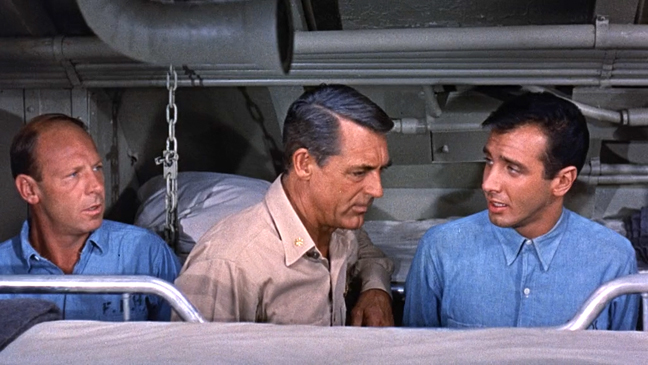 Tony Pastor Jr. with Cary Grant in ‘Operation Petticoat’ (1959)
Tony Pastor Jr. with Cary Grant in ‘Operation Petticoat’ (1959)
*
11.
1975 David F. Friedman and William Castleman
In 1975, William Castleman made Johnny Firecloud, and EVI had an unexpected hit.
It was a rip-off of the successful Billy Jack (1971), a Native American-themed exploitation film – Siouxsploitation, if you will – spending $220,000, their largest budget ever. (It also boasted the catchphrase ‘Redskins no longer bite the dust, They just eat dirt’. Times sure were different back in 1975.). The cost was largely paid for by Twentieth Century Fox, who made a deal for the foreign distribution rights. Friedman and Castleman kept the domestic/Canadian rights and so cashed in royally when the movie played in theaters around the country, and even more so when it was later syndicated to television.
The pair were flush with cash again, their faith in bigger-budget exploitation films restored – for now at least.
*
12.
1959-1969 Tony Pastor Jr.
It was clear that if there was one family member destined for fame and fortune, it was Tony Jr.
Sure, older brother Guy had the golden jazz voice, friendly charisma, good looks, and a suave way that attracted women (a mature but still-beautiful Hedy Lamarr was just one notch on his bedpost), but Tony Jr. was the prodigal son.
After the success of ‘Operation Petticoat’ in 1959, the cigar-chewing studio heads sent him fat offers. Tony Jr. was a no-brainer for their casting agents: young – just turned 20 – part of the new rock n’ roll generation, a Frankie Avalon look-a-like without the wussy bobby sox, a talented actor and writer, and a showbiz kid whose father was a big name on the lounge music circuit. He was also someone who could afford to be unusually picky and choosey – one early refusal was a role in a new Sammy Davis Jr. musical. Both Tony Jr. and Guy signed big-time exclusive representation deals with MCA.
But if Tony Jr. had ambitions to become an actor, his father had other ideas: if his sons were going to be in show business, he wanted them working with him. After Tony Sr. disbanded his long-running orchestra in 1959, he set his heart on forming an-all new family band that he believed could be a Vegas smash hit.
Tony Sr.’s eldest son, Guy, was already onboard. Guy had been the first to go to college – the University of Connecticut (graduating with honors, unlike Tony Jr.) – and had joined his father’s orchestra in the last year of its existence, appearing on television shows like The Perry Como Show.
Guy was a hit with the band, and in 1958, Tony Sr. recorded an LP with his son, ‘A Guy And His Dad’ – backed by his orchestra. Now father and son appealed to Tony Jr. to join them in the new act, ‘The Tony Pastor Show.’ It would be a smaller, family-oriented outfit (Tony Sr.’s brother Stubby was also on trumpet and trombone) – and with lower overheads, Tony Sr. was confident they’d make more money than ever if they secured a decent residency in a party town like Vegas.
Tony Jr. was conflicted. He loved his family and enjoyed being with his father and brother. But they still dug swing music, light years from the cutting, creative edge of rock n’ roll that excited him. Tony Sr. suggested a compromise: in addition to joining The Tony Pastor Show, they’d groom Tony Jr. for solo success as a pop star. Tony agreed, and signed on.
In 1959, Tony Jr. launched his bid for stardom by recording a rock n’ roll anthem ‘Beware of Girls’, released on Personality Records in 1959.
Backed by Tony Sr.’s band, the disc received positive reviews (“Tony Pastor Jr. does a pro job on this driving date – exciting rock n’ roll set attraction” said Cash Box magazine) and it charted in the lower reaches of Billboard’s Top 100.
The single was promoted by his appearances with the Tony Pastor Show as they perfected their act at the Stage Bar of Harrah’s in Reno, before hitting the Stardust Hotel in Vegas. Their debut shows in Sin City, which added female vocalist eye candy Penie Pryor to the line-up, brought the house down. A live record, ‘Shakin’ Up Vegas! With The Tony Pastor Show’ was released on Capitol Records in 1960, which showcased each family member – Tony Jr. took the lead on ‘Well Alright, Ok, You Win’ – and the LP, together with two singles, sold well.
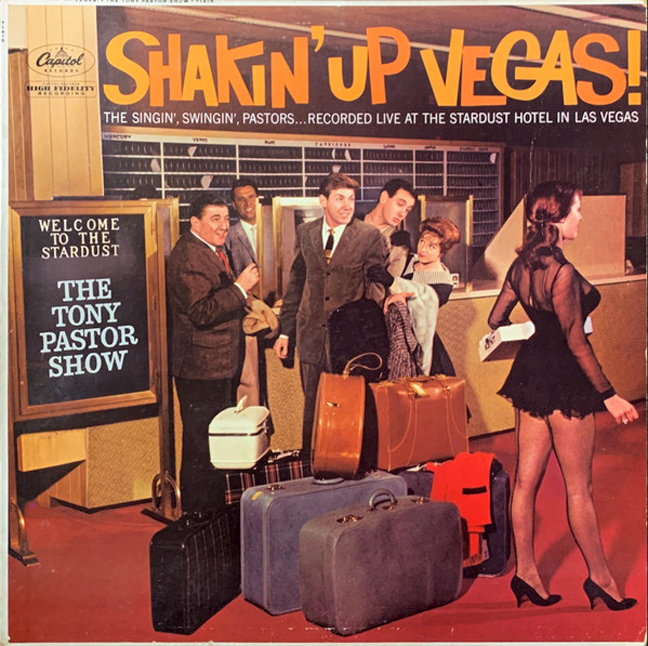 (from left to right, checking into the Stardust Hotel) Tony Pastor Sr., Guy, Tony Jr., Penie Pryor
(from left to right, checking into the Stardust Hotel) Tony Pastor Sr., Guy, Tony Jr., Penie Pryor
The Pastor family were now hot commodities: famed producer/songwriter Buck Ram managed them, they appeared on the Ed Sullivan Show, Guy recorded a popular spin-off album, ‘Meet a Happy Guy’ (1960) and in 1961, the family group released a follow-up LP, ‘Cut-Up Tenderloin’ by Tony Pastor Sr and The Pastors. There was even a TV show, ‘At Home With The Pastors,’ in advance stages of negotiations.
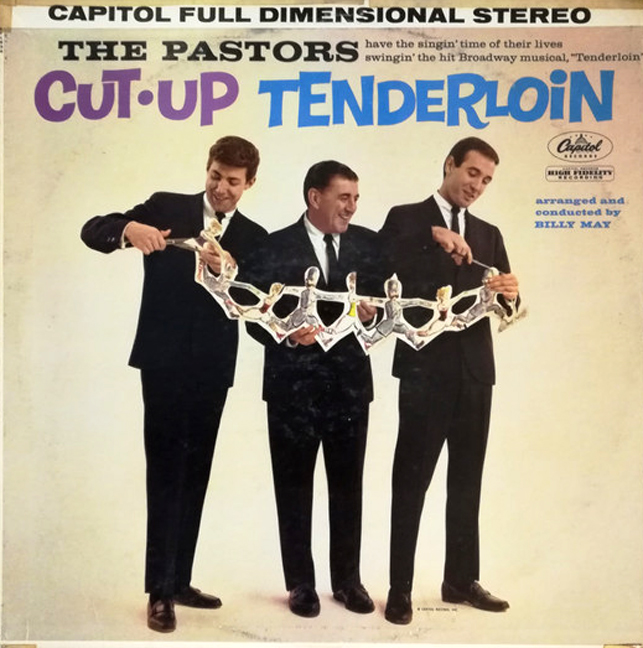 (from left to right) Guy, Tony Sr., Tony Jr.
(from left to right) Guy, Tony Sr., Tony Jr.
For Tony Jr. it was a good life. His single didn’t make him an immediate star but that didn’t concern him: he had time to build his own music career as well as to write plays – and his first musical ‘Be my Guest’ premiered in 1962. He continued to release singles, including ‘Follow Your Heart’ (1964) and a cover of the ‘Theme From Peyton Place (For Those Who Are Young)’ (1965). They sold reasonably well, and some of them were minor hits, such as “I’ll Forgive (but I Won’t Forget)”, a Doc Pomus and Mort Shuman song that made the Adult Contemporary chart in 1966. Its success resulted in appearances on the syndicated ‘The Big 5 Show’ with Simon and Garfunkel in January 1966, and with Gene Pitney and The Lovin’ Spoonful in April 1966.
As the decade introduced new music styles, Tony Jr. wanted to branch out and capture the zeitgeist in a more direct way. In 1967, he formed a band with brothers Guy and John called The Prime Mover (not to be confused with the same-vintage Iggy Pop group, Prime Movers), and, together with younger brother John, he wrote an underground classic, ‘When You Made Love To Me.’
A psychedelic punk song, it was unlike anything that any of the Pastors had ever recorded before. To be honest, it wasn’t much like anything that anyone had written before, and critics couldn’t reconcile the single with the family’s storied swing history – and so decided they couldn’t take it seriously and dismissed it. It was a shame. Released in late 1967 on the Socko label, ‘When You Made Love To Me’ deserved to be the breakthrough Tony Jr. had been looking for, but it died a death. Today the single is revered by collectors and fans of 1960s garage music.
*
13.
1968 Tony Sr.
In May 1968, Tony Sr. suffered a massive stroke.
He was appearing in Dayton, Ohio, touring with the band. Doctors diagnosed exhaustion and prescribed complete rest and a break from music. Tony Sr. took the setback seriously, becoming a recluse for the next eighteen months, while Guy and Tony Jr. kept the band going. But it wasn’t the same without the big guy, and when Tony Sr. died of heart failure in his home in Old Lyme, Connecticut in November 1969, aged 62, it was the end of an era, both for swing music and the Pastor family.
*
14.
1975 David F. Friedman and William Castleman – and Tony Curtis and Lany Gustavson. And Tony Jr. too.
It was fading Hollywood superstar, Tony Curtis, who indirectly facilitated Dave Friedman and William Castleman’s entry into hardcore sex films.
Bizarrely, they were brought together by a tall, blond Scandinavian with a name that could’ve come off the sleeve notes of an Abba album: Bjorn Gunnar Gustavson, usually known as ‘Lany.’ Lany was a one-time actor-dreamer whose lack of success had downgraded his aspirations to being a jobbing B-movie crew member. He was well known to Friedman and Castleman as a more-than-competent assistant on EVI productions starting in the early 1970s – including production managing Castleman’s ‘Bummer’ (1973).
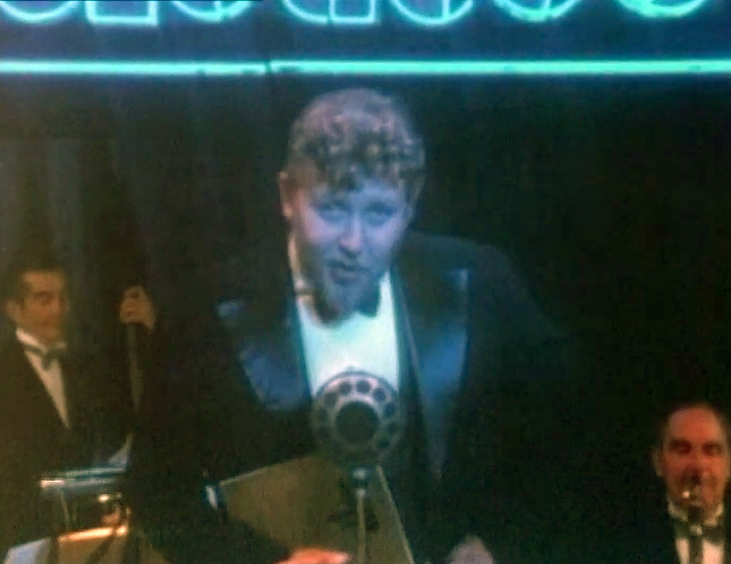 Lany Gustavson, in a rare acting role: ‘The Four Deuces’ (1976)
Lany Gustavson, in a rare acting role: ‘The Four Deuces’ (1976)
In early 1974, Lany had been hired by the Golan-Globus juggernaut production company, and was working on the cheap and cheerful ‘Godfather’ rip-off flick, Lepke (1975), which starred Tony Curtis as Louis ‘Lepke’ Buchalter, the head of Murder Inc. In truth, Curtis’ best acting days were behind him, just as the best parties were straight ahead of him. Lany was part of Curtis’ posse, well-liked and trusted, and there were rumors he’d become Curtis’ drug supplier. (In his 2008 autobiography, Curtis pinpointed the ‘Lepke’ shoot as when his heavy addiction to cocaine first kicked off.)
During the ‘Lepke’ production, there was nothing more frequent than an occasional drink for Curtis. After each day wrapped, he held court with compadres that variously included Kirk Douglas, Roger Moore, and Burt Lancaster among others. Lany was a regular too, and one night he called Dave Friedman and William Castleman to stop by the Rainbow Bar and Grill for a drink and to swap stories with them.
That night, Curtis also called up his old ‘Operation Petticoat’ friend, Tony Pastor Jr., and ordered him to get his ass down to the Bar. It’d been years since the Key West ‘Petticoat’ shoot and a reunion was overdue. When Tony Jr. arrived, he found Jack Lemmon, Cary Grant, Menahem Golan, Jack Palance, and Dave Friedman among others – a group he described as “the most enjoyable and eclectic company of has-beens and never-would-bes.”
Eventually the conversation turned to Friedman and sex movies. Friedman said that adult films were more fun and much more profitable than anything Hollywood was doing. He trotted out his well-worn boasts that by exploiting the lust, greed, and ignorance of the American public: all he had to do was put film in one end of the projector and money came out of the other end.
Tony Jr. was amused with the banter. Friedman was smart and knowledgeable, wholesome even, and was clearly making money too. They swapped more anecdotes, experiences, and finally phone numbers, and agreed to stay in touch.
It would be two years before Lany called Tony Jr.
Any interest in doing some directing work? It would be for Dave Friedman and his associate, William Castleman. EVI. Several films, potentially. Both on the west coast and on the east. Best to talk about it in person: these two films were going to be a little different from your average drive-in flick.
Sure, said Tony Jr. Always happy to meet.
*
15.
1968-1977 Tony Jr.
After their father’s death, Tony Jr. and Guy headed to New York for a fresh start and moved into an apartment over Radio City Music Hall, a location where their father had played decades earlier.
Tony Jr. took an executive role with a Madison Avenue ad agency. He had much to offer: a font of creative ideas, he’d made a few freelance documentaries for television during the 1960s, was an accomplished artist – his human form drawings were always admired – and he could instantly improvise, compose, and sing catchy music for corporate campaigns. He did well in the new role, competently managing several large corporate accounts (it was Tony Jr. who came up with the successful and long-lasting Mazola Oil campaign that featured the catchphrase, “Naturally”). He was promoted, but the next-level seniority was a depressing Catch-22: the more senior position increased his exposure to corporate politics and reduced his opportunity to be creative. Frustrated, he quit the job.
Tony Jr. and Guy decided to revive their music careers by forming a music group, and encouraged younger brother John to take leave from his job as a teacher to join them. Together they formed ‘The Pastors’ (or sometimes ‘The Pastor Brothers’) and quickly secured a major contract with Avco-Embassy, the record label wing of the Embassy film production studio which had enjoyed a big hit with the Oscar-winning ‘The Graduate’ (1967). They debuted their act at the Drake Hotel in New York, and fittingly their mother was in the audience with Artie Shaw, their father’s friend and former band leader back in the 1920s and 30s. Artie Shaw was impressed with the band – but most of all, he liked Tony Jr. Shaw approached Tony Jr. and suggested he leave the brothers and lead his band instead: “You have your father’s personality,” he said. “It will be like the old days.” The other brothers panicked, but Tony Jr. reassured them he was going nowhere.
In 1970, they released the single ‘Don’t Leave Me Baby’, a Harry Nilsson cover, which tickled the lower end of the charts, and earned them TV appearances on popular prime-time programming like The Mike Douglas Show and The Pearl Bailey Show in 1971. Pearl Bailey, fresh off her Tony Award for the title role in the all-black production of ‘Hello, Dolly!’ in 1968, loved the three brothers and hired them as support on her world tour.
After the Pearl Bailey tour, Tony Jr. and Guy decided to move to California: they were both dating singers, and the two couples decided to move west to form a commercial jingle agency in their downtime from the family band.
In 1972, still searching for the elusive big hit, the Pastors changed label, signing for the independent Alithia company, and released a double-sided single, ‘She Let’s Her Hair Down’ / ‘Solitude’.
Other singles, ‘World’, and ‘Robin Hood’ followed in 1972, before The Pastors put out their first LP, ‘The Pastors’, in 1973. The records failed to register, as did a change in emphasis, when the group rebranded themselves as ‘Guy Pastor And The Pastors’, releasing further singles, ‘Cheatin’ On Me’ (1973) and ‘Home To Myself’ (1975). The truth was the music business had moved on, and left them behind.
For Tony Jr., his life needed a re-boot and a new start.
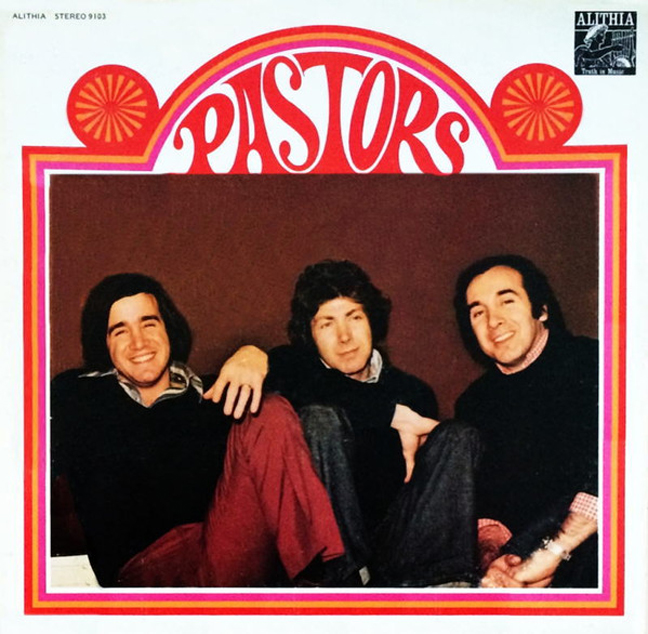 (from left to right) John, Guy, Tony Jr.
(from left to right) John, Guy, Tony Jr.
*
16.
1977 Antonio Shepherd
When Tony Jr. met with Dave Friedman, William Castleman, and Lany Gustavson at Musso & Franks in late 1977, he wasn’t doing much. He also had no idea why they wanted to meet.
It was Castleman who made the pitch: Dave Friedman and he had decided it was time for EVI to stop pussy-footing around. They had the cash from ‘Johnny Firecloud’ and now they wanted to make explicit sex films. Proper ones. Classy ones. The legal risk had subsided and there was money to be made. They were looking for someone with film experience who would write and direct the first two – and maybe more – in the series. They wanted someone outside of the X-rated business who could provide a fresh take on filming sex in an attractive way, and they liked Tony Jr. They also wanted proper music – bespoke soundtracks in fact – and Tony Jr. would be perfect for that too. Lany Gustavson would handle all the operational aspects: he’d hire the actors, find the crew and locations, and make sure everything ran smoothly. And they would all guarantee Tony Jr. anonymity if that was important to him.
Tony Jr. took the offer away to think about it. He’d recently decided he wanted to move into TV and film, so perhaps this would be a good way to start. An unconventional way, sure, but the money that Dave Friedman was giving him to make the films was more than anyone else was offering. Tony Jr. wasn’t entirely comfortable with the explicit sexual nature of the movies, but he was no prude either, so in the end, he called Lany back and accepted.
Friedman was excited to start: “It’ll be like ‘Operation No Petticoat!” he not-so-helpfully suggested.
And so, Tony Jr. – Hollywood actor, teen idol, playwright, swing band vocalist, garage punk singer, documentarian, Madison Avenue ad man, jingles writer, business owner, and vocalist with The Pastors – became Antonio Shepherd. Adult film director.
*
In the next installment: behind the scenes, and the making of ‘7 Into Snowy’ (1978) and ‘Chorus Call (1978)’.
*
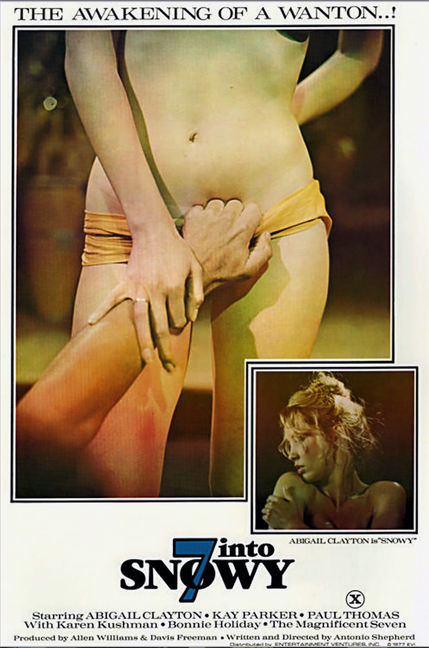
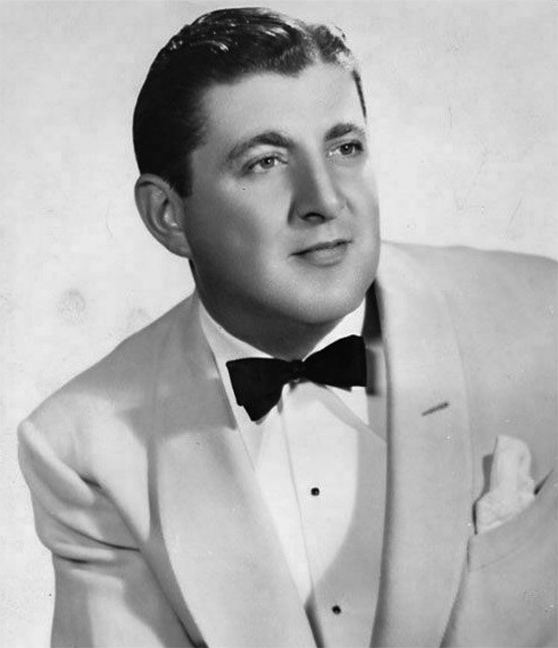
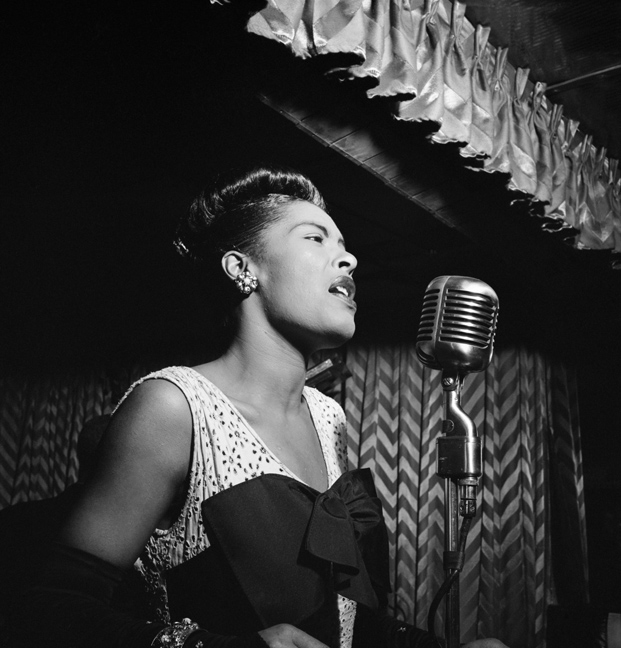
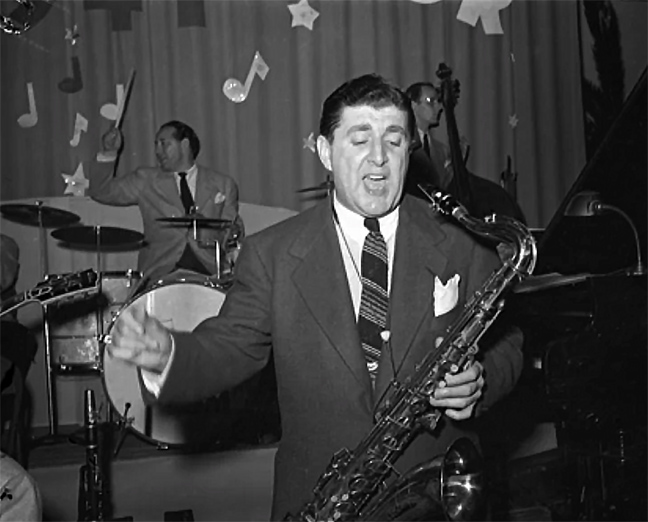
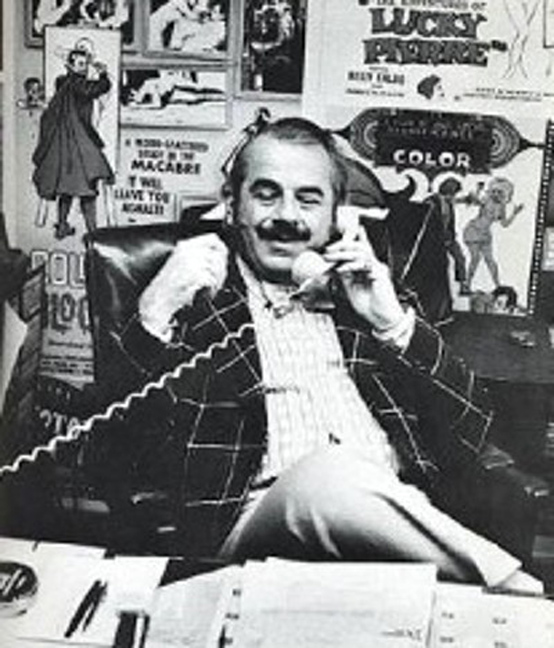
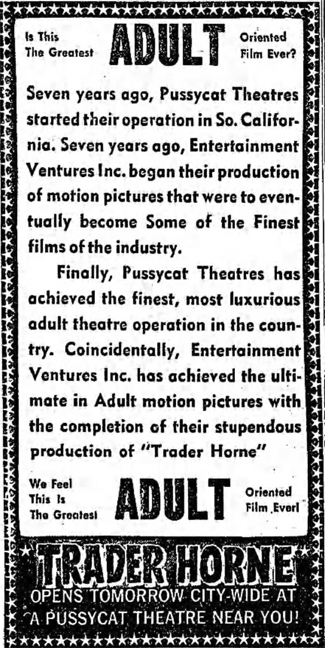
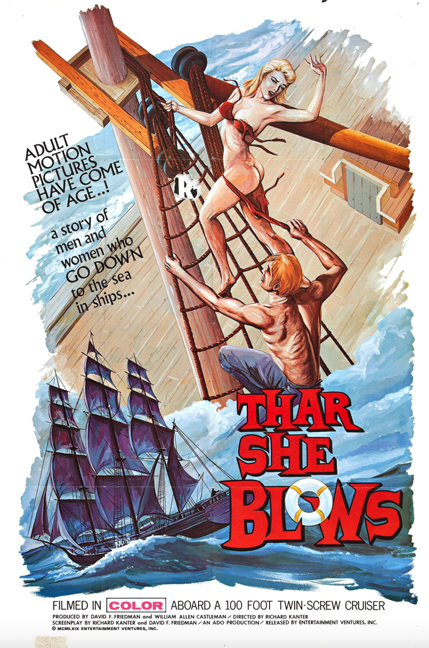
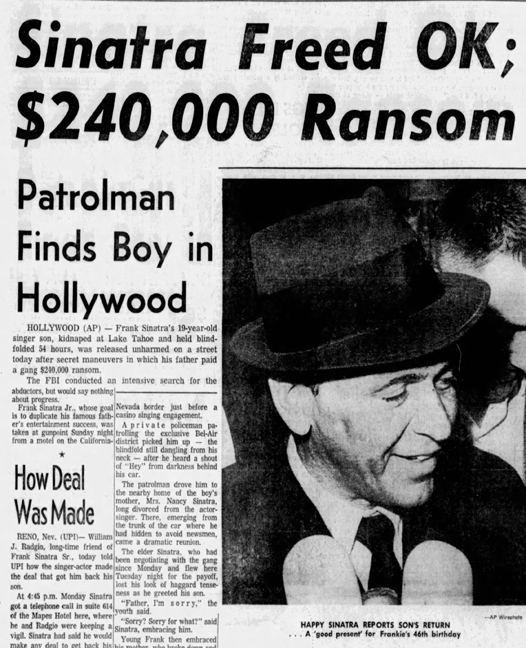
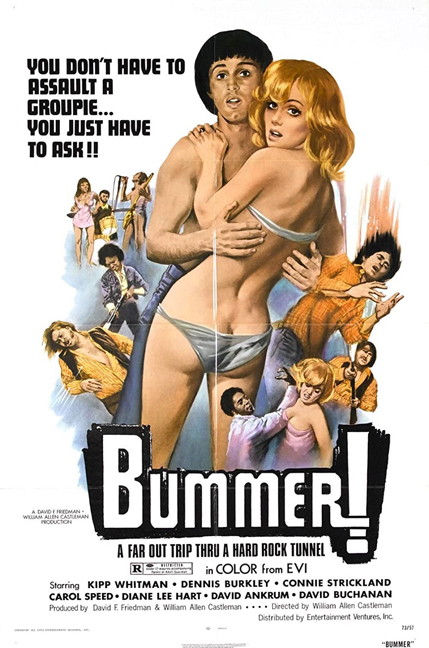
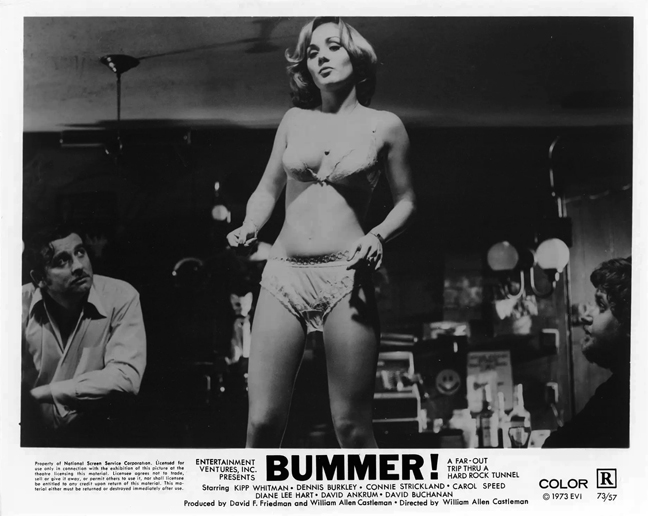

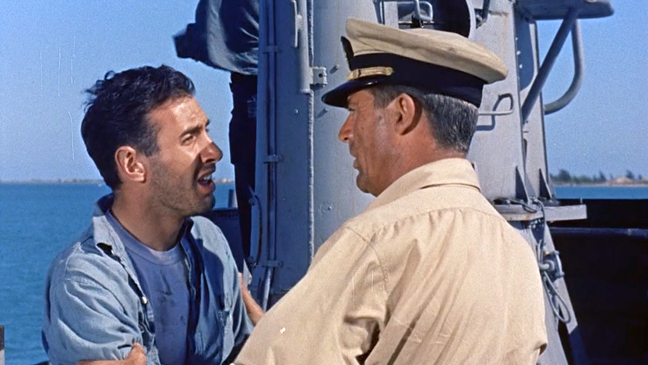
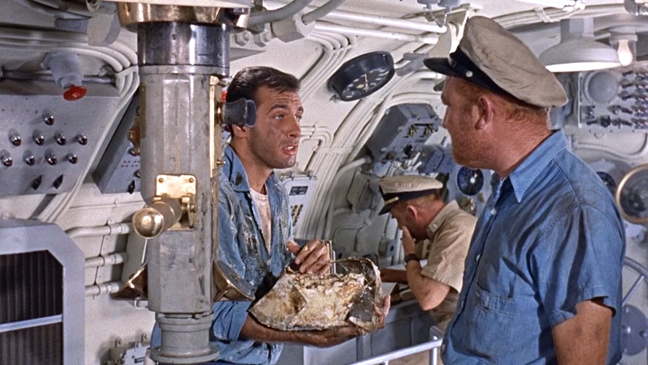

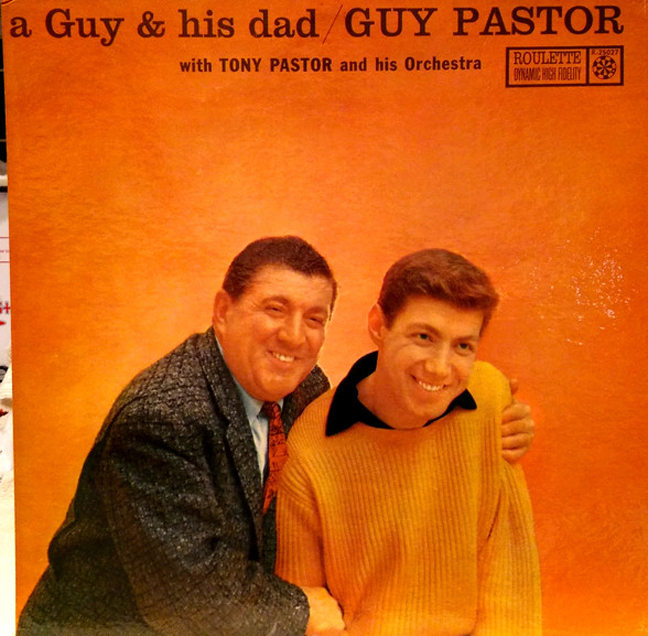

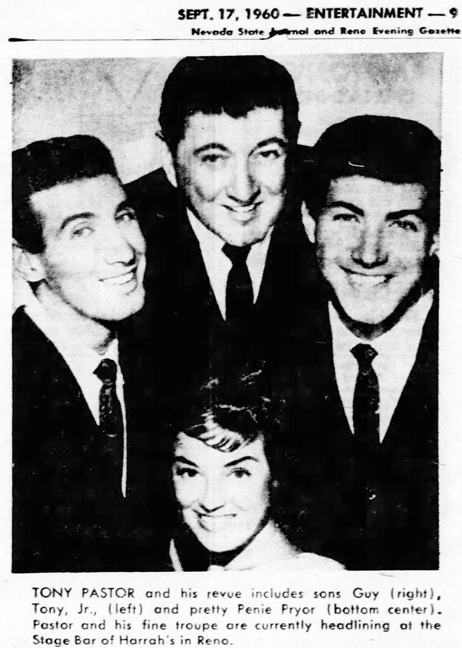
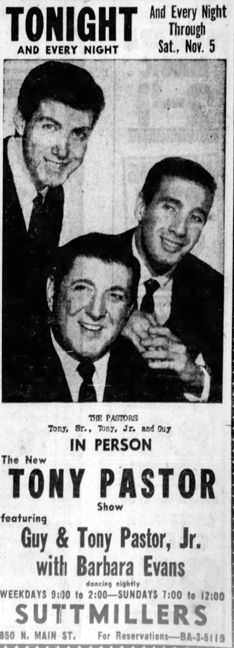
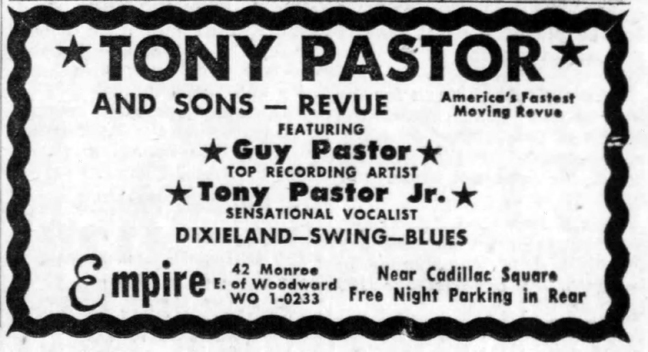
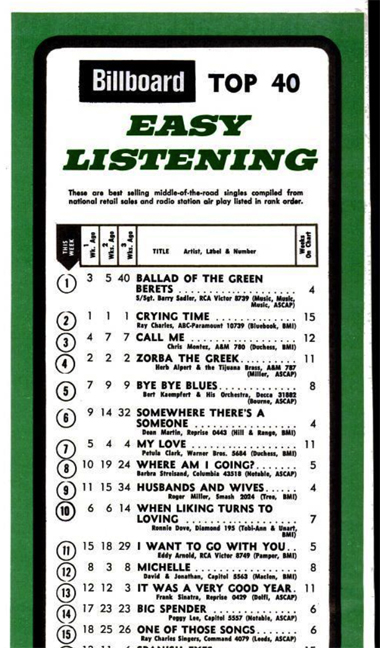
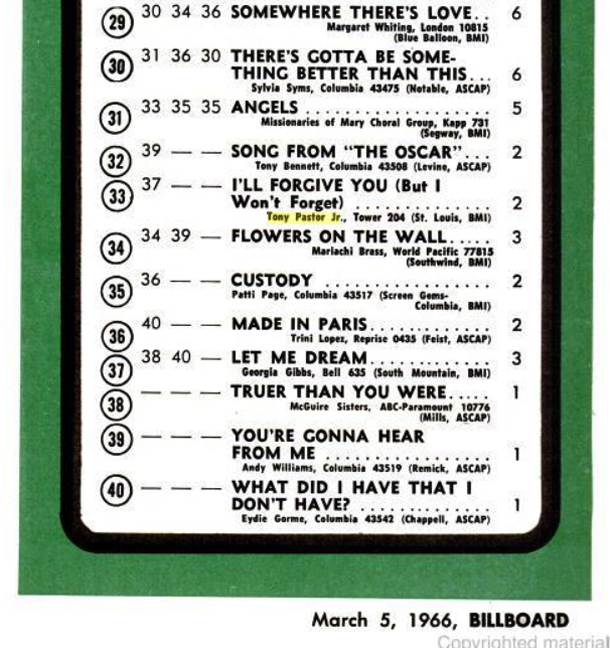
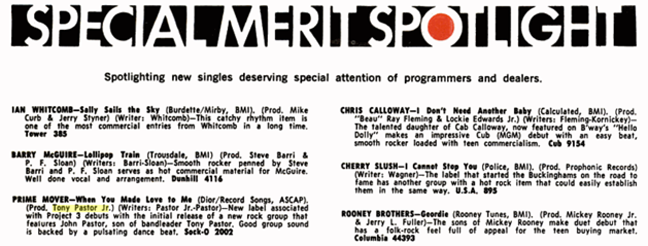
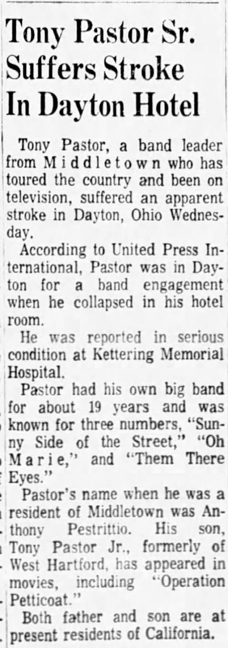
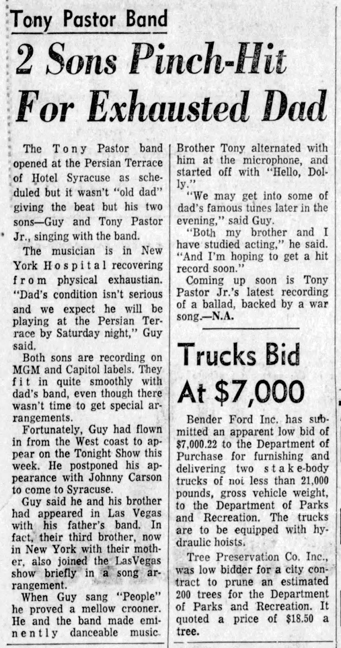

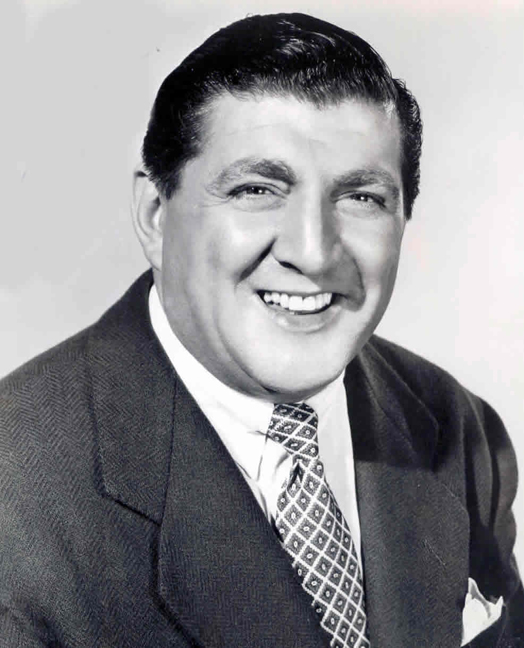
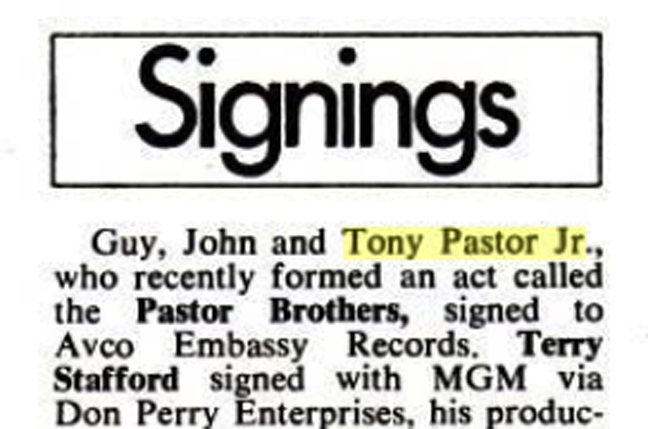
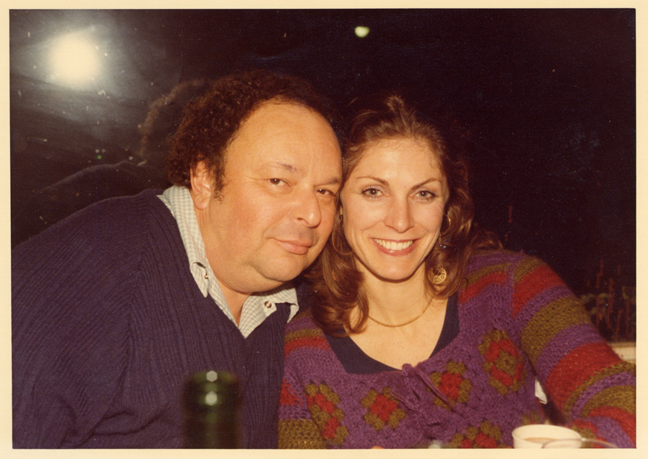
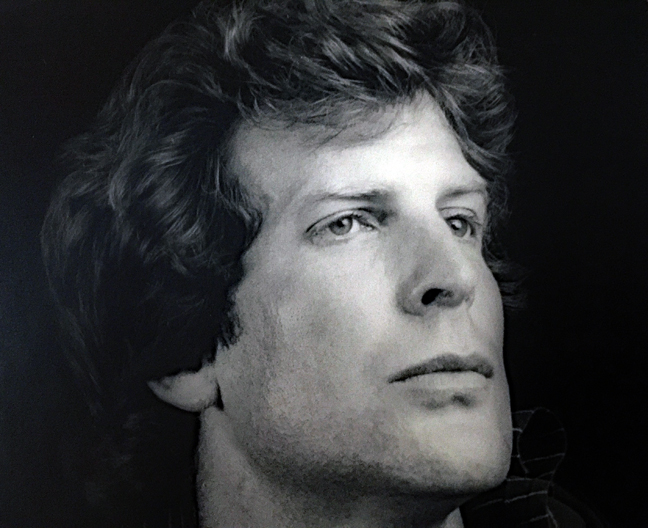

Awesome Article Keep Up Good Work
One of the great mysteries of adjult film history solved… and how!!! Tremendous story and great music!
This is worthy of a Hollywood movie. Cinematic and evocative. Jounalism of the highest order.
And there’s still a part 2 to come…? Can’t wait.
Terrific. Highly recommended.
Great sleuthing as always! Dave Friedman did indeed distance himself from the Triple XXX films he produced (although he remained a vocal proponent of pornography and First Amendment rights for decades). He often said producing films just wasn’t “fun” anymore once the business model became more explicit (as well as dealing with the possible legal ramifications involved.) Friedman was no stranger to lawsuits (I have office file boxes full of old legal paperwork related to lawsuits he was in during the 1970s). He was literally involved in the adult motion picture business from the early “Birth of a Baby” exploitation films, to nudist camp romps, to nudie cuties comedies, the roughies to softies, to big budget drive-in exploitation, finally to hardcore. The man was remarkable to say the least. (I’m still sitting on original 35mm film elements for “7 Into Snowy” which I hope will see the light of day in the future…)
This is amazing news!!!!! Both the information about Friedman and the original SEVEN INTO SNOWY film elements…
It is an interesting film and I can’t think of a movie that has been treated worse in terms of terribly poor (and incomplete) versions being released.
I sincerely hope that some company like Melusine can release it……. with this amazing investigative writing from The Rialto Report.
Seriously was there ever a better marriage: VS + Melusine + Rialto!?!
I hope something comes of the follow up to A Youth in Babylon. Unless he was just doing what he does best and teasing what he never really started to write. Rumor was he was going to discuss the XXX part of his life.
This article – and hundreds of others – is almost too good for a website.
These deserve a award-winning literature treatment.
We are truly blessed to have such quality. The Rialto Report stands out for such outstanding writing and research.
It was really fascinating the way you started off with Tony Pastor Sr. and showed how Tony Pastor Jr./Antonio Shepherd’s relationship with his father, brothers, fame, and famous people brought him to that particular place and time in 1977 for him to direct those two classics. I’m hoping that Part II reveals that Tony Pastor Jr. is still alive, doing well, and that he actively participated in, and endorsed, this piece. I’m going to hold off on doing any research of my own and wait for Rialto Report to tell me next week (or whenever Part II drops.). I also really enjoyed the videos and singles recordings RR culled from YouTube that were attached to this article.
Growing up in Middletown CT in the 80s, Tony Pastor Sr was still talked about as a Sicilian favorite son/local boy made good. I would have never guessed that his kid directed Seven Into Snowy! If only I knew that when I interviewed David Friedman years ago. Superb work as always.
To me, half of the fun of any RR is the cultural artifacts you display along the journey of telling the story. BUMMER! looked like a 1966 movie made in 1973. No wonder it flopped!
Reading this fantastic post just carried me away to another world. Your deep knowledge of the subjects and the fantastic writing was just a joy to experience. Thank you so much.